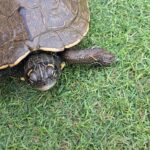Over here on the FantaSEA blog, we talk about corals a lot. After all, they’re among the most coveted aquarium décor for saltwater fishkeepers! But let’s back things up a bit for the ones among us who aren’t experienced reefkeepers yet. After all, understanding the basics of these organisms helps us better understand how to care for them. So, what is a coral? An animal? A plant? Something else?
Let’s go into what corals are, where they naturally occur and what their function is in the underwater ecosystem.
What is a coral?
Looking at a coral, it’s easy to think that it’s most likely some kind of colorful underwater plant. The truth is that corals are actually a little cooler than that (in our opinion at least!). Corals are not plants. In fact, they’re more closely related to jellyfish than to seaweed!
A coral is not a single organism. Rather, reefs are massive colonies of animals called polyps that group together for their survival and produce calcium carbonate skeletons to help them attach to rocks and other surfaces. They’re sessile animals, meaning that they don’t move around.
As individual polyps grow and eventually die off, their exoskeletons stay in place, giving new polyps a spot to latch onto. We’ll go further into the coral life cycle and how they reproduce below. Some reefs are more than a million years old!
Most corals and reefs are found in (sub)tropical regions, with many occurring in shallow waters, although some are found at great depths.
Did you know? Corals are among the oldest organisms still to be found on earth today. They started becoming common in the Ordovician period, which commenced some 485 million years ago.

Does coral have a function?
You betcha! Corals serve a function underwater not unlike rainforests do on land. The reefs they form are the basis for entire ecosystems, harboring mind-boggling biodiversity that couldn’t exist without them. Thousands of fish species, not to mention invertebrates like molluscs and crustaceans, depend on their presence for survival.
As for us humans, we absolutely benefit from the presence of coral reefs as well. Here are some of the primary ways we depend on corals:
- Coral reefs form barriers between the open sea and coastal communities, offering crucial protection from storms and floods.
- Because so many species of fish and invertebrates call corals home, entire communities depend on them for food.
- Many of those who live among the coast depend on the tourism that coral reefs provide.
- The harvest of corals and the species that call reefs their home for the aquarium trade is a livelihood for many people.
Did you know? There are two types of corals: hard corals and soft corals. Hard corals are referred to as such because they’re the ones that produce calcium carbonate exoskeletons, forming reef structures. Soft corals don’t have the capacity to form reefs, but they are a part of them.
Do corals eat?
Now that you know that corals are animals, you might be wondering how they sustain themselves. They can’t exactly walk around the reef looking for their next meal.
Well, corals sure do eat. Each individual polyp that makes up what we know as a coral is a tiny organism that is mainly made up of tentacles surrounding a mouth. These tentacles are ideal for catching passing particles and even small organisms, which they then transport to the mouth.
This being said, corals don’t catch all of their food themselves. Many also host zooxanthellae, which are unicellular micro-organisms that have the capacity to photosynthesize. They produce nutrients for the coral, helping to sustain it, while in turn living themselves off the waste the coral produces. A useful symbiotic relationship for both parties! As a side note, the zooxanthellae also tend to be what gives corals their bright colors that we love them for.
How do corals reproduce?
As with pretty much everything about them, it can be a bit difficult to imagine how corals reproduce if the individual polyps can’t actually move around to reach each other. They evolved to find a way around this, and it’s actually a pretty spectacular event.
Corals can reproduce sexually and asexually. Some species are hermaphrodites (meaning they’re both sexes at once), while others are of a single sex. Whatever they are, most of them reproduce by “broadcast spawning”, meaning they basically shoot their eggs and sperm into the water in a synchronized manner. You’d be lucky to see them get frisky like this, though as it only happens about once a year.
These spawning events are triggered by environmental factors like water temperature and they can be massive, with whole reefs launching clouds at once. Tiny larvae then form and descend on any hard surfaces, where they eventually morph into coral polyps.
Asexual coral reproduction occurs through division, which can be deliberate (when a polyp splits or produces offsets) or accidental (like when a storm or other event breaks off pieces of coral, which end up forming new colonies in different spots). In the aquarium hobby, this makes it easy to propagate corals, a process referred to as fragging.
Did you know? Although corals play nice to their own species, they aren’t always good neighbors to other varieties. It’s difficult to imagine, but coral warfare is a thing! Some use long tentacles to sneak up to other corals and sting them.

Conclusion
So, what is a coral? Surprisingly, it’s an animal, and an important one at that. Being huge coral lovers and fans of sustainable aquaculture that doesn’t destroy natural reefs, we’d like to ask you to take a few more minutes and read up about coral loss and what you can do to help make sure these amazing ecosystems don’t cease to exist.
Are you dreaming about your own aquarium? We can help! FantaSEA Aquariums designs, builds and maintains fish tanks for our clients. You can contact us here with your ideas.





